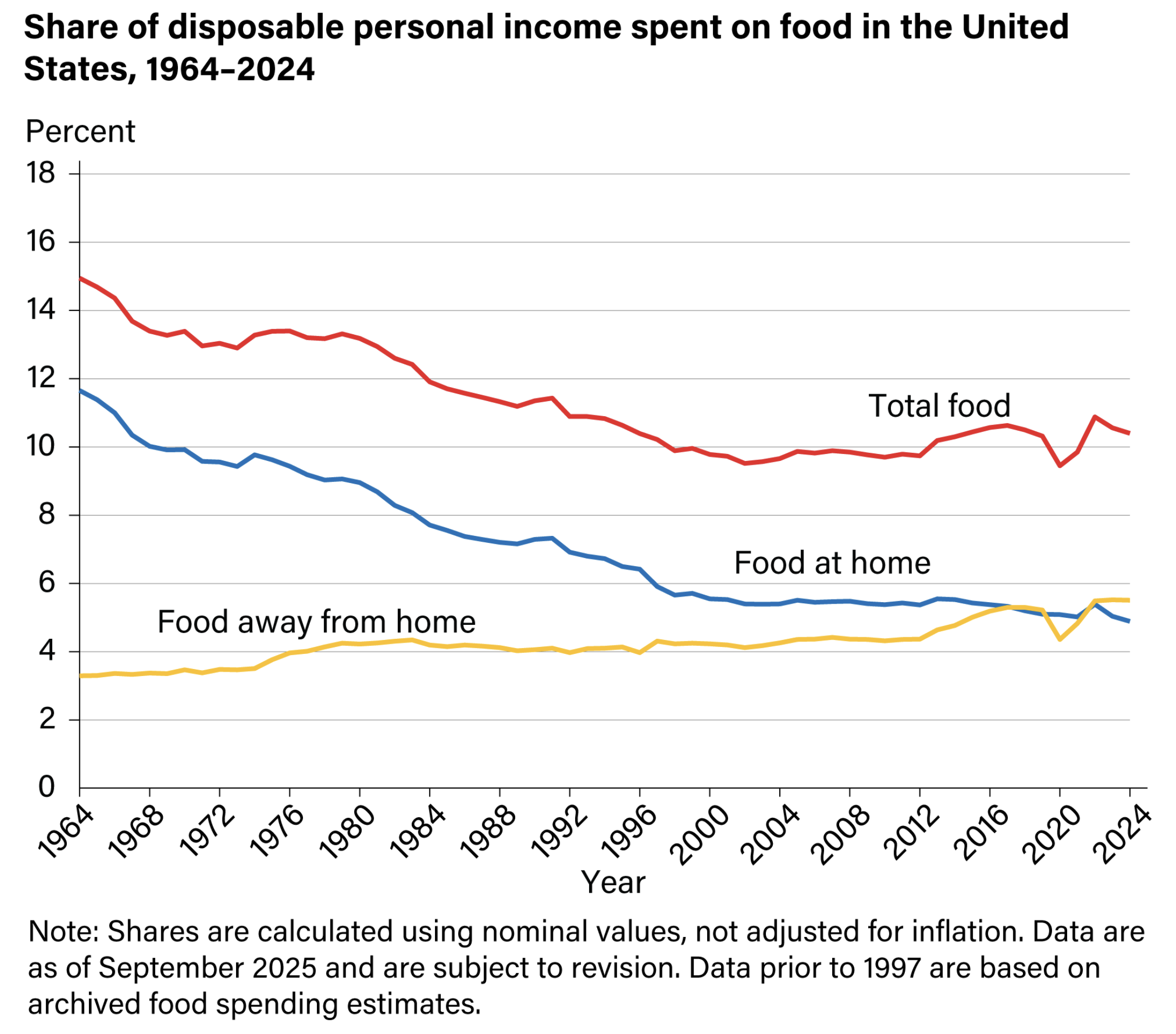Thankfully, We Don't Have To Spend As Much of Our Incomes on Food As Our Ancestors Did
The portion that Americans spend on food has fallen steeply over the last century.

Let's set aside the controversy over what Walmart's shrinkflation of its annual Thanksgiving feast bundle might suggest for the recent trajectory of grocery prices. The good news for which we can be thankful is that the share of their incomes that average Americans devote to paying for food has fallen steeply over the last 100 years.

This happy development stems from two long-term trends: rising incomes and falling food prices.
In 1929, Americans spent 23.4 percent of their after tax-personal disposable income buying food, reported the U.S. Department of Agriculture in 2006. In 1929, food eaten at home accounted for 17 percent of expenditures.*
At the aggregate level, a crude calculation finds that in 1960, 11.4 percent of total GDP was spent on purchasing food for personal consumption. In 2025 that has fallen to 5.1 percent of GDP. Basically, as their incomes rise, Americans spend more money on food but it represents a smaller share of their income, and the proportion spent on nonfood items increases. Real U.S. disposal income per capita has increased from $13,500 in 1960 to nearly $53,000 today. After tax, personal disposable income hovers just above 70 percent of total GDP.
The U.S. Department of Agriculture confirms these declining trends using different calculations.

The agency reports, "In 2024, U.S. consumers spent an average of 10.4 percent of their disposable personal incomes on food, a decrease from 10.6 percent in 2023." Americans spend 4.9 percent of their incomes on food at home and 5.5 percent on food away from home, such as dining out at restaurants.
What about the price of foods? As Americans all too well know, the USDA reports that food prices rose by 23.6 percent between 2020 and 2024. Grocery prices do bounce around, especially during periods of high inflation like what we have recently been enduring. Nevertheless, the century-long trend has been falling prices for food staples, as shown by combining selected deflated Bureau of Labor Statistics and Federal Reserve Bank of St. Louis data on food prices.

While Americans on average devote just over 10 percent of their disposable incomes to food, those in the lowest income quintile spend just under 33 percent of their incomes on food.

As high as that percentage is, families in the lowest quintile were spending around 58 percent of their after-tax income on food as recently as the early 1980s.
As we gather for our holiday feasts, let us take a moment to appreciate that, over the past century, steady gains in productivity, innovation, and economic growth have allowed families to devote a smaller and smaller share of their budgets to putting food on the table. That is truly an achievement worth celebrating this Thanksgiving.
*CORRECTION: The original article misstated the percent of food expenditures.


Show Comments (22)